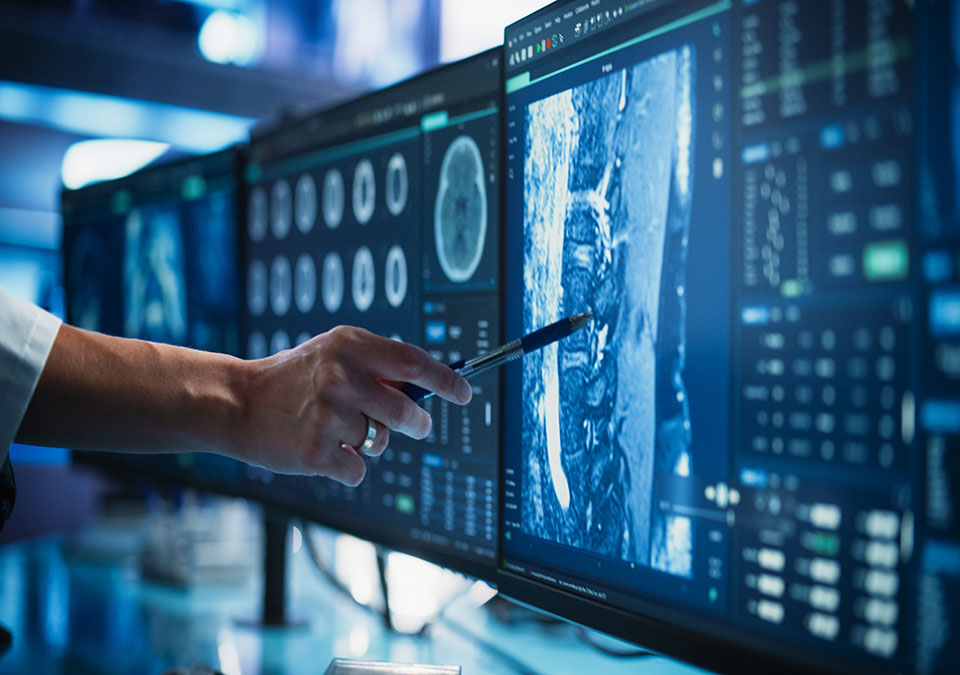
Primary care physicians aren’t radiology specialists, but the field still impacts their work. PCPs will almost certainly need to refer patients for medical imaging or use the results to inform their treatment plans.
Those factors alone make it crucial for providers to understand the basics of radiology. If you’re curious about why radiology is important for PCPs and how it applies to you, you’re in the right place.
What Is Radiology?
While you likely learned about radiology in medical school, you may not have much hands-on experience with it. To refresh your memory and help you understand why it’s so important, here are some reminders:
First, “radiology” is medical imaging and diagnostics. In general, health professionals conduct these tests to diagnose or monitor various conditions. However, interventional radiology uses radiation to treat specific conditions, such as cancer.
Common conditions diagnosed or monitored with medical imaging include:
- Cancer
- Chronic venous disease
- Liver disease
- Kidney stones
- Heart disease
- Osteoporosis
From X-rays and CT scans to MRIs and ultrasounds, doctors can request a range of tests for their patients. There’s also nuclear medicine, which involves the use of radioactive material to visualize areas of the body that are difficult to see. These tests are often used to examine areas such as muscles, bones, or the thyroid gland.
Radiology in the Primary Care Setting
Although radiologists conduct medical imaging, PCPs should retain a general knowledge of it to aid in decision-making and patient experience. Here are three examples of how radiology impacts primary care:
1. Knowing When to Refer Someone to Radiology
Since you have a different specialty, the American College of Radiology has created a portal to help you determine when a referral is needed.
The ACR Appropriateness CriteriaⓇ portal provides evidence-based guidelines for referring someone based on their concerns or conditions. It also has patient summaries about the imaging that you can use to help people understand the recommended scans.
2. Creating a Care Plan
General knowledge of radiology can also help you recognize certain conditions before receiving a radiologist’s final results. While you should always listen to their official diagnosis, having an idea ahead of time can help you start forming a care plan.
Keep in mind that while it’s okay to review the results, self-interpreting them could lead to mistakes. Radiologists have extensive training, making their interpretations more reliable and accurate.
3. Interacting With Patients
Understanding radiology is also helpful when interacting with patients. When recommending imaging, it’s essential to communicate the risks and benefits of it to help someone make an informed decision.
In other instances, you may encounter patients who have questions about their results. If they’re conclusive, physicians can use the information to explain the diagnosis and create a treatment plan.
Other patients may request a specific type of imaging for a concern they have. With some background information, you can determine if the request is appropriate, which prevents unnecessary tests.
Why Is Radiology Important?
Radiology is a critical aspect of healthcare that complements primary care visits. Some of the benefits of knowing when to refer someone for medical imaging include:
- Improved patient outcomes
- Decreased time to diagnosis and treatment
- Enhanced shared decision-making
- Increased patient satisfaction
- Reduced need for exploratory or invasive surgeries
- Improved diagnostic and treatment confidence
- Enhanced clinical decisions
With an understanding of radiology, you can guide informed consent and make effective treatment plans.
For more information about radiology and how it impacts PCPs, try continuing medical education (CME) on the topic, including our popular Radiology for the Non-Radiologist courses, available live and on demand!
> Live Radiology CME
> On Demand Radiology CME

